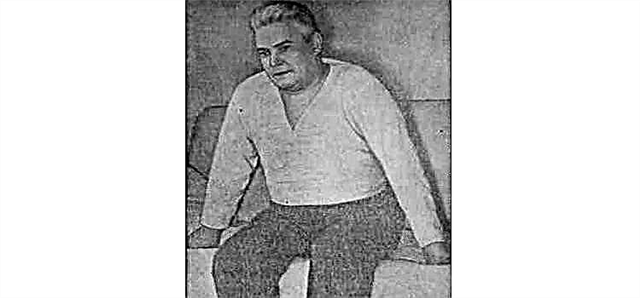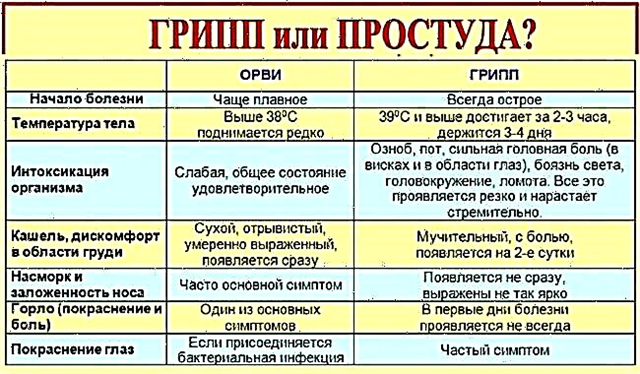Polyposis of the nose most often affects children under the age of 10 years. This is due to the fact that their immunity is not yet fully formed, and infectious diseases often occur in the upper respiratory tract. It is believed that the main cause of the violation is not fully treated or too frequent rhinitis. However, polyps in a child's nose are also formed under the influence of other factors. They may not make themselves felt for a long time, and then lead to irreversible pathological processes in the body.
Insidiousness and danger of disease
 Nasal polyps in children are not easy to detect, especially in the early stages. The neoplasm itself does not pose any danger to life and health, it is not painful, rather soft, it can have a leg or be attached directly to the mucous membrane. The tumor is benign except in very rare cases. However, not everything is as simple as it seems at first glance.
Nasal polyps in children are not easy to detect, especially in the early stages. The neoplasm itself does not pose any danger to life and health, it is not painful, rather soft, it can have a leg or be attached directly to the mucous membrane. The tumor is benign except in very rare cases. However, not everything is as simple as it seems at first glance.
The growths in the nose do not cause any discomfort to babies exactly until they begin to grow. A small polyp of 2-3 mm is not a problem, but a group of neoplasms similar to grape bunches is a serious health threat.
Most often, in children, tumors form in the paranasal sinuses and spread into the nasopharynx. However, it is possible to diagnose a violation only by conducting special tests and examination by a specialist.
Causes of the disease
You can find a nasal polyp in children who often have colds. Constant irritation of the mucous membrane leads to the fact that its upper cells exfoliate, and the secretory function decreases. At this moment, the protective function turns on - the tissue begins to grow, hypertrophy is an attempt to replace the missing cells. Tumors are formed from these neoplasms.
Children are at risk if they have these health problems:
- chronic inflammation of the upper respiratory tract;
- chronic inflammation of the paranasal sinuses;
- allergic disorders;
- narrow nasal passages or a deviated nasal septum;
- cystic fibrosis is a genetic disease, one of the characteristic features of which is a functional disorder of the respiratory system;
- Young and Churge-Strauss syndrome;
- hereditary predisposition;
- intolerance to aspirin.
Signals of the presence of a disease
 If the baby has polyps in the nose, this does not mean that when you look into the passage, you will see meat sticking out of it or something like that. In most cases, neoplasms are not visible to the naked eye. Only a doctor can recognize them, but parents should pay attention to such changes in the baby's condition:
If the baby has polyps in the nose, this does not mean that when you look into the passage, you will see meat sticking out of it or something like that. In most cases, neoplasms are not visible to the naked eye. Only a doctor can recognize them, but parents should pay attention to such changes in the baby's condition:
- Lack of appetite. Taste buds in tumors may malfunction or not work at all. This leads to a complete or partial loss of taste in the child, from which he can refuse food. If polyps are found in a baby, then they can completely cause a violation of the sucking function, since the baby cannot receive oxygen through the nose, and has not yet learned to breathe through the mouth. Refusal to eat often accompanies the violation.
- Persistent nasal congestion. If a child is constantly worried about a runny nose that does not go away for more than 10 days, there is no point in treating him with special drops and sprays. Go to an ENT appointment right away, this condition may indicate the presence of polyps and more serious disorders.
- Sneezing. When a growth is the size of a small wart, it may be completely imperceptible, but if the neoplasm grows, it begins to come into contact with the cilia in healthy areas of the mucous membranes, and irritate them. The body perceives this signal as the presence of a foreign body in the respiratory tract and tries to get rid of it by sneezing.
- Sleep disorder. The polyp does not allow the child to breathe normally during sleep, as oxygen is retained. If there is a lump in the nose, your baby may snore. In some cases, even sleep apnea appears - a condition when breathing stops altogether for a few seconds, and then it is restored, but becomes more frequent.
- Hearing problems. A large neoplasm can block the entrance to the auditory tube, causing hearing loss. In babies, this symptom is fraught with a delay in the development of speech, and for older children it brings a lot of inconvenience due to the inability to normally perceive the world around them.
- Complete and partial loss of smell. The nerves and receptors compressed by the polyp cannot normally perceive aromas, therefore they are either poorly felt by the child, or the scent disappears completely. Restoring the sense of smell is a difficult and not always realistic task.
- Curvature of facial features. A persistently open mouth is a sign of nasal polyps. The child tries to breathe through the mouth, because his lower jaw is protruding. This leads to problems with bite, deformation of the lower bones of the skull, cosmetic problems and pathologies of the development of the chest.
 Headache. The growths interfere with normal inhalation, and the body does not receive air in normal quantities. This also leads to oxygen starvation. This pathology causes not only headache, but general lethargy, decreased mental and physical activity.
Headache. The growths interfere with normal inhalation, and the body does not receive air in normal quantities. This also leads to oxygen starvation. This pathology causes not only headache, but general lethargy, decreased mental and physical activity.- Pain in the face. Due to constant pressure in the nasal cavity or paranasal sinuses, pain may occur in the upper jaw, cheeks, and eyes. In some advanced cases, there is difficulty in blinking for centuries.
- Voice change. The negative effect of the polyp on hearing cannot but affect the voice. The child begins to nasal, to speak "in the nose", his speech becomes incomprehensible. It is possible to eliminate this symptom only after the tumors are completely cured.
Diagnostic features
To prescribe an effective treatment for a child, the otolaryngologist must correctly diagnose. The main task of the doctor is to determine the degree and localization of the disorder, features, and also to identify the reasons that led to its development.
Therapy should be aimed not only at eliminating the polyps themselves, but also the disease that provoked their growth. If you do not approach the choice of methods for eliminating the problem in a comprehensive manner, then neoplasms will appear again.
For diagnostics, the following procedures are used:
- general and biochemical blood test;
- rhinoscopy (examination of the patient with special instruments);
- biopsy, if there is a suspicion that the neoplasm is malignant;
- radiography;
- CT scan;
- Magnetic resonance imaging;
- allergy tests;
- tests for cystic fibrosis.
Features of therapy
 Depending on the severity of the disease, the patient's age and many other factors, the doctor chooses the most effective treatment. In the first stage, drug therapy can be used. In the second stage, it is best to remove polyps by introducing hormonal drugs into their cavity or by surgery. The third stage, especially aggravated by concomitant disorders, requires an integrated approach - both operating and medication methods of treatment are used.
Depending on the severity of the disease, the patient's age and many other factors, the doctor chooses the most effective treatment. In the first stage, drug therapy can be used. In the second stage, it is best to remove polyps by introducing hormonal drugs into their cavity or by surgery. The third stage, especially aggravated by concomitant disorders, requires an integrated approach - both operating and medication methods of treatment are used.
Parents should remain alert after completing therapy. Their task is to prevent recurrence of polyposis.
You can avoid the disease by maintaining the baby's immunity at a high level, hardening, eliminating all negative factors that affect the deterioration of the condition (allergens, dust, tobacco smoke). Preventive measures must be followed at all times.
In conclusion
The child's body is unstable against viral, bacterial and fungal diseases, which most often lead to the formation of polyps. It is important to detect this violation in time and eliminate it in order to prevent complications.
At an early age, neoplasms can be especially dangerous and negatively affect the development of children. Seek medical help in time and carefully monitor the condition of your baby.
 Headache. The growths interfere with normal inhalation, and the body does not receive air in normal quantities. This also leads to oxygen starvation. This pathology causes not only headache, but general lethargy, decreased mental and physical activity.
Headache. The growths interfere with normal inhalation, and the body does not receive air in normal quantities. This also leads to oxygen starvation. This pathology causes not only headache, but general lethargy, decreased mental and physical activity.

